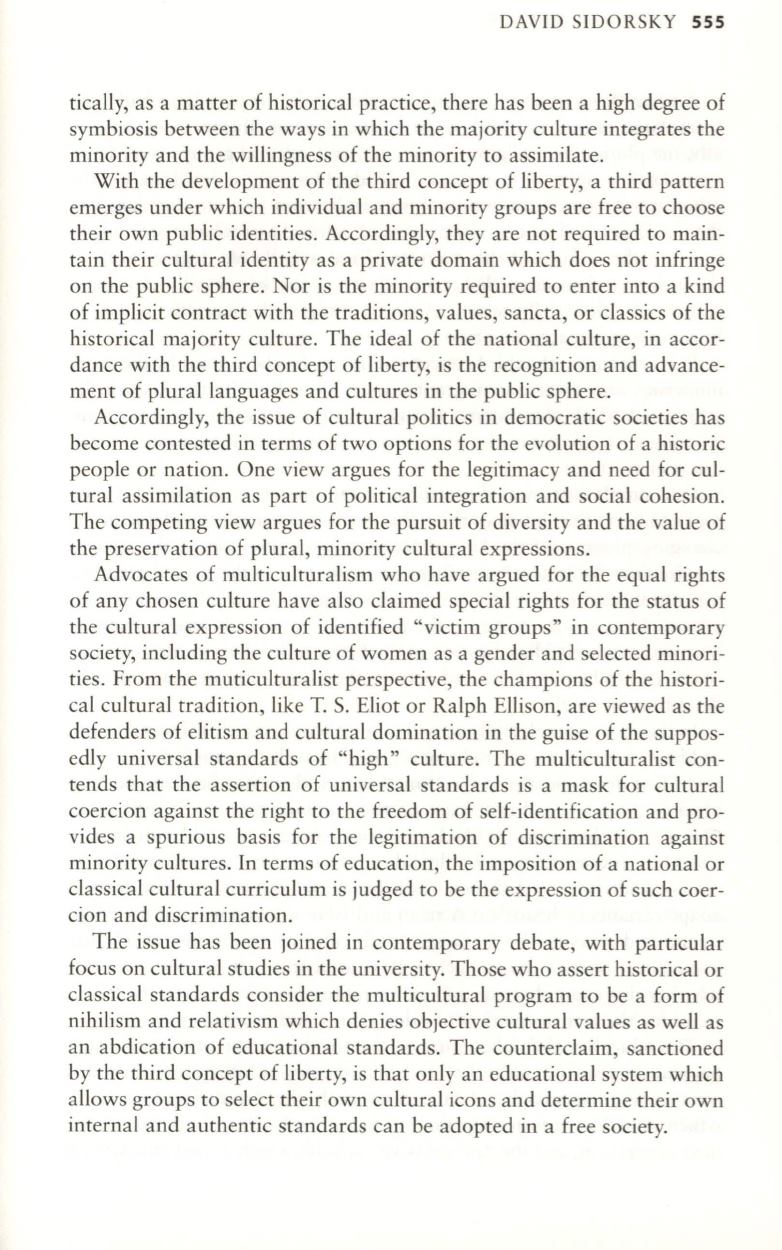
DAVID SIDORSKY
555
tically, as a matter of historical practice, there has been a high degree of
symbiosis between the ways in which the majority culture integrates the
minority and the willingness of the minority
to
assimilate.
With the development of the third concept of liberty, a third pattern
emerges under which individual and minority groups are free to choose
their own public identities. Accordingly, they are not required to main–
tain their cultural identity as a private domain which does not infringe
on the public sphere. Nor is the minority required to enter into a kind
of implicit contract with the traditions, values, sancta, or classics of the
historical majority culture. The ideal of the national culture, in accor–
dance with the third concept of liberty, is the recognition and advance–
ment of plural languages and cultures in the public sphere.
Accordingly, the issue of cultural politics in democratic societies has
become contested in terms of two options for the evolution of a historic
people or nation. One view argues for the legitimacy and need for cul–
tural assimilation as part of political integration and social cohesion.
The competing view argues for the pursuit of diversity and the value of
the preservation of plural, minority cultural expressions.
Advocates of multiculturalism who have argued for the equal rights
of any chosen culture have also claimed special rights for the status of
the cultural expression of identified "victim groups" in contemporary
society, including the culture of women as a gender and selected minori–
ties. From the muticulturalist perspective, the champions of the histori–
cal cultural tradition, like
T.
S. Eliot or Ralph Ellison, are viewed as the
defenders of elitism and cultural domination in the guise of the suppos–
edly universal standards of "high" culture. The multiculturalist con–
tends that the assertion of universal standards is a mask for cultural
coercion against the right
to
the freedom of self-identification and pro–
vides a spurious basis for the legitimation of discrimination against
minority cultures. In terms of education, the imposition of a national or
classical cultural curriculum is judged to be the expression of such coer–
cion and discrimination.
The issue has been joined in contemporary debate, with particular
focus on cultural studies in the university. Those who assert historical or
classical standards consider the multicultural program to be a form of
nihilism and relativism which denies objective cultural values as well as
an abdication of educational standards . The counterclaim, sanctioned
by the third concept of liberty, is that only an educational system which
allows groups
to
select their own cultural icons and determine their own
internal and authentic standards can be adopted in a free society.


